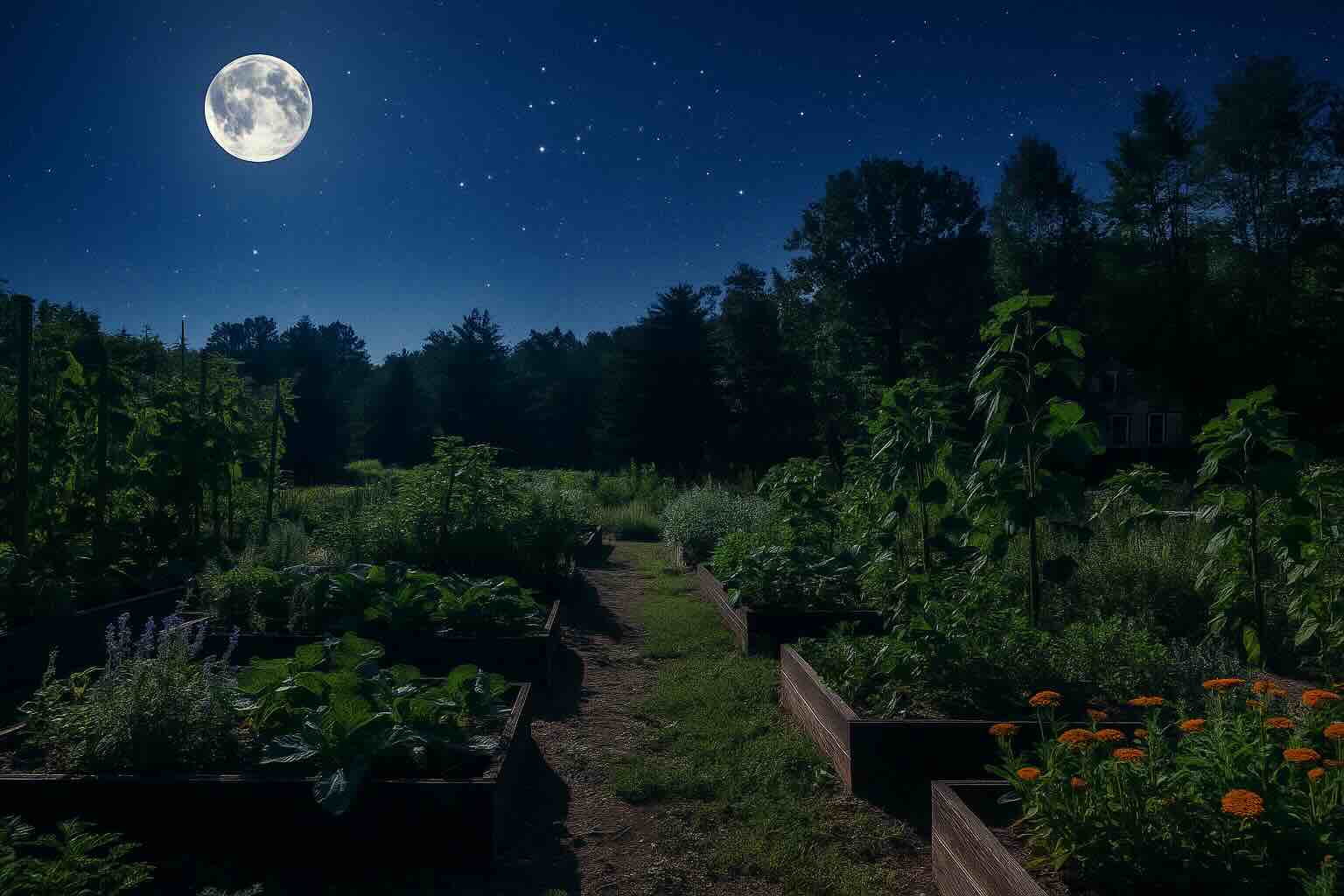For centuries, farmers and gardeners have looked to the moon for guidance. Some swear by planting calendars tied to lunar phases, claiming better yields and healthier crops. Others dismiss it as folklore without scientific proof. So where does the truth lie? Is gardening by moonlight a powerful natural tool—or simply a myth that has endured through tradition?
The Ancient Roots of Lunar Gardening
The idea of planting by the moon dates back thousands of years. Ancient civilizations including the Babylonians, Egyptians, and Indigenous cultures noticed patterns between lunar cycles and crop success. They believed that the moon’s pull on water influenced soil moisture, much like it drives ocean tides.
Even the Romans recorded lunar planting practices in agricultural texts. For them, the moon was not just a light in the sky but a clock for farming decisions. Today, modern lunar gardening calendars are based on these same ideas, though updated with astronomical precision.
The Core Beliefs Behind Moon Gardening
Lunar gardening usually divides planting and garden care into four main moon phases. Each phase is thought to favor certain activities:
New Moon
A time for root crops, transplanting, and soil work, as lunar gravity supposedly draws energy downward into the earth.
Waxing Moon
As the light increases, gardeners plant leafy greens, grains, and herbs, encouraged by rising energy and upward moisture movement.
Full Moon
Fruit-bearing plants such as beans, tomatoes, and squash are believed to thrive when planted under a full moon’s brilliance.
Waning Moon
Pruning, weeding, and harvesting are typically scheduled for this quieter phase when plant activity is thought to slow down.
The Science of the Moon’s Influence
But what does modern science say? It’s true that the moon exerts gravitational pull on Earth’s water. This is why tides rise and fall. However, when it comes to soil, the effect is far less dramatic. Scientists argue that groundwater levels are not noticeably shifted by lunar cycles, especially compared to rainfall or irrigation.
That said, some studies suggest that moonlight itself may affect plants. Research has shown that certain species are sensitive to nocturnal light, even at very low intensities. For example, flowering and germination in some plants can be influenced by the length of day and night—known as photoperiodism. The subtle glow of the moon could, in theory, play a small role in these processes.
Does Moon Gardening Actually Work?
While no large-scale scientific consensus supports lunar gardening as a proven method, many gardeners report personal success. Their observations often describe stronger root systems, healthier leaves, and better harvests when following moon phases.
This could be due to several factors. The practice itself encourages gardeners to plan carefully, creating a rhythm and discipline in their planting schedule. Even if the moon is not the direct cause, the structure of the calendar may be what improves results.
Modern Studies and Experiments
Some small-scale agricultural studies have tried to test lunar gardening claims. For example, experiments with beans and cereals under different moon phases sometimes show differences in germination speed or growth. However, these effects are often inconsistent or too small to separate from natural variation.
Still, scientists agree that plants are highly responsive to light, water, and gravity. While the moon may not be the dominant force, it is possible that its cycles play a subtle supporting role in plant development.
The Psychological Benefit of Moon Gardening
Even skeptics admit that gardening by the moon can offer psychological rewards. Following the lunar cycle connects people to natural rhythms, fostering mindfulness and patience. The practice transforms gardening into more than just a hobby—it becomes a ritual that links soil, sky, and spirit.
For communities, lunar gardening can also create shared traditions. Comparing notes on crops planted at new or full moons strengthens local bonds and keeps ancient knowledge alive in a modern context.
Balancing Science and Tradition
The debate between science and tradition does not have to be a conflict. Gardening by the moon may not yet be fully proven by scientific standards, but neither can it be dismissed outright. Plants live in a complex web of influences—sunlight, soil quality, water, temperature, and possibly even subtle lunar effects.
For many gardeners, blending tradition with science provides the best of both worlds. They track moon phases while also using modern techniques like soil testing, organic fertilizers, and sustainable watering practices. This hybrid approach can maximize both productivity and personal satisfaction.
Should You Try Moon Gardening?
If you’re curious, the answer is yes. At worst, it brings structure and mindfulness to your gardening schedule. At best, it may give your plants a subtle advantage that science has yet to fully explain. Either way, it costs nothing to align your gardening calendar with the moon and observe the results.
Keep a journal to note planting dates, moon phases, and crop performance. Over time, you may discover your own patterns that support or challenge the tradition. That personal data will be far more meaningful than any general claim.
Final Thoughts: Myth, Science, or Both?
So, is gardening by moonlight myth or science? The truth lies somewhere in between. While hard evidence of lunar influence remains limited, the practice holds cultural, psychological, and perhaps subtle biological benefits. It is a reminder that gardening is as much art as science, a partnership between humans and the natural cycles that shape our world.
Whether you believe in lunar forces or simply enjoy the ritual, moon gardening invites us to look up at the night sky and see our gardens as part of something larger. And that, perhaps, is its greatest gift.
